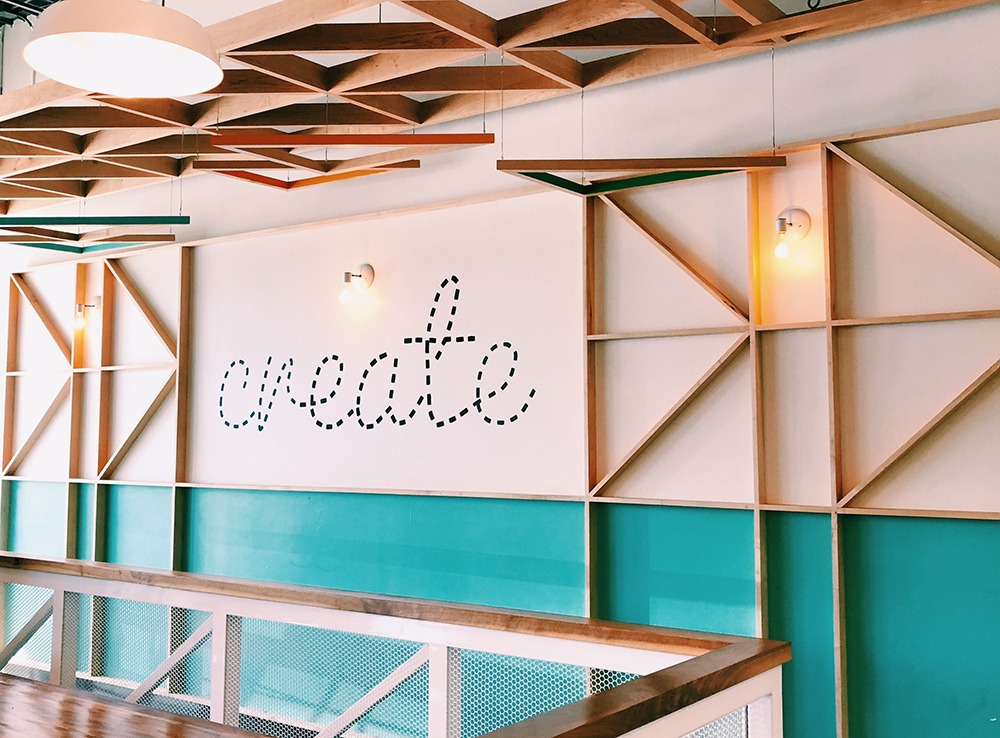You might have heard that you only have a few seconds for your brand make a good first impression. It turns out that a few seconds may be too late. In terms of your website, you really have only about five hundredths of a second (50 milliseconds) to win over new customers, according to research by Google.
There’s really only one versatile tool that startups can deploy to engage prospects in a fraction of time that small: great design. A consistent design across websites, mobile messaging, packaging and marketing materials creates an indelible and utterly unique impression of your company in the minds of potential buyers.
The New Kid Problem
Startups have more to prove and must gain traction rapidly to break through the wall of noise out there. It’s not fair, but the “new kid on the block” always has much more to prove if they hope to attract customers away from entrenched competitors.
Even though money is tight in the early days, the earlier you are in the startup process, the more design matters. New entrants don’t have the kind of social proof and brand awareness of their rivals to reassure prospects that they are for real. Fortunately, the superpower of great design is that it conveys the level of authority and trust you need, and does it at a pre-conscious level, long before the viewer’s first blink.
Jumping The Trust Gap
Research by Search Engine Journal confirmed that great design is the key to audience trust and loyalty. Design choices are not as subjective as you might think. There are established elements of design and aesthetics that communicate immediately messages like professionalism, reliability, and attention to detail.
Along the same lines, a survey of executives by Canadean found that 69 percent agreed with the statement that great design in packaging is instrumental in building trust and subsequently driving revenues. As the speed of life in general has accelerated and the time available for decision-making has decreased across a broad range of purchase options, consumers gravitate to a clear and aesthetically pleasing design that simplifies the task of choosing. By applying the principles of design, you are actually making life better for consumers, in addition to the value of the good or service you provide.
Design and Financial Performance
The ironic part about all this is that majority of startup owners choose to go the other direction — treating design as a late stage layer to slap on top once the minimal viable product (MVP) is functional. It’s common to hear startup owners say things like, “We can’t afford design right now,” but the data shows that design is more of a “need” than a “nice.”
A 2018 study by McKinsey reported that leading companies owe a great deal of their market position to putting design first. They found that design-first companies, across all industries they studied, secured double the revenue growth of their less appealing peers. The correlation was so strong that the researchers concluded, “the market disproportionately rewarded companies that truly stood out from the crowd.”
Despite the evidence though, 50 percent of company owners admitted that “they have no objective way to assess or set targets for the output of their design teams.” Without metrics to establish the connection between design and performance, leaders literally don’t see the true value of design. That gives a massive advantage to startups who do.
The Aftereffects of Great Design
There’s another element to design in the early stages of company development though, that makes a design-orientation even more valuable. Design is not just about how customers and prospects feel about your brand, it’s about how you organize and structure your company culture from the ground up.
The process of coming up with a design that encapsulates your mission is as just important as the end result. Going through the steps and making those choices will change how you think about yourself and your relationship to your customers in four ways:
Design requires you to articulate what makes your company different and valuable.
Design pushes your thinking beyond your current limitations, prompting you to explore the “adjacent possible” space where true innovation begins.
A commitment to design thinking prioritizes evidence-based investigations into engagement and motivation, rather than relying on out-dated templates or HiPPO (the highest paid person’s opinion).
A recognition of how important design is to culture helps you see where your company fits into the big picture. The central metaphor at the heart of your new design can truly change the world.
The Takeaway
Customers and potential customers are going to form opinions about how much value your startup provides in a matter of milliseconds. Great design, one that follows well-defined principles of aesthetics, can convey a host of messages in a glance, handling a great deal of the heavy lifting in establishing the necessary trust and authority. Companies that prioritized design early on have been able to reap enormous financial performance benefits. What may matter even more than revenue, though, is the impact your design can have on the lives of consumers everywhere. You can’t architect a building after it’s built. Build with better design from the very beginning.



